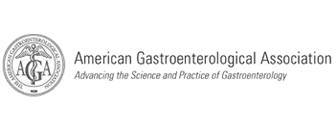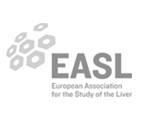Colonoscopy
INTRODUCTION - A colonoscopy is an examination of the lower part of the gastrointestinal tract, which is called the colon or large intestine (bowel). Colonoscopy is a safe procedure that provides information other tests may not be able to give. Patients who require colonoscopy often have questions and concerns about the procedure. Colonoscopy is performed by an endoscopist, who is a physician with special training in endoscopy procedures. The colonoscope is inserted into the anus and advanced through the entire colon (to the cecum) and possibly a short distance into the small intestine. The procedure generally takes between twenty minutes and one hour.
REASONS FOR COLONOSCOPY - The most common reasons for colonoscopy are to evaluate the following:
- As a screening exam for colon cancer in anyone over age 50
- Blood in the stool or rectal bleeding
- Dark/black stools
- Persistent diarrhea
- Iron deficiency anemia (a decrease in blood count due to loss of iron)
- Significant, unexplained weight loss, accompanied by gastrointestinal symptoms
- A family history of colon cancer
- To follow up an abnormal barium enema
- A history of previous colon polyps or colon cancer
- Surveillance in people with ulcerative colitis and Crohn's disease
- For the medical management of chronic inflammatory bowel disease
- Chronic, unexplained abdominal pain.
PREPARATION - The endoscopy unit will provide specific instructions about how to prepare for the examination. The instructions are designed to maximize safety during and after the examination, minimize possible complications, and allow the endoscopist to fully view the colon. It is important to read the instructions ahead of time and follow them carefully; patients who have questions should speak with their healthcare provider or the endoscopy unit. The inside lining of the colon must be cleaned of stool to permit the endoscopist to complete a thorough examination. This is accomplished by restricting what is eaten and by using purgatives.
What to eat - As a general rule, patients should not eat any solid food for at least one day before the examination. Only clear liquids (such as juices without pulp, bouillon, ginger ale) or clear gelatin (flavored is fine, but without added fruit) are recommended.
Bowel emptying - There are two methods commonly used to empty the bowel of stool.
The first involves drinking 3 liters of an undigestible solution (Glycoprep®, and others) that causes temporary diarrhea. It is flavoured, but unfortunately, this only partially masks a somewhat unpleasant taste. Refrigerating the solution may make it more palatable. Drinking such a large volume of cold solution may cause a patient to feel chilled, but the sensation is temporary. Do not add flavoring to the solution. Many patients say that drinking the purgative solution is the most unpleasant part of the examination.
The second method involves drinking a solution called Picoprep, along with clear liquid. This preparation is easier to consume than the purgative described above. However, the solution contains a large amount of phosphorus, which may be a problem for people with heart or kidney conditions.
Medications - Some medications, such as iron preparations, should be discontinued for one to two weeks before the examination. Patients who take a blood thinning medication (eg, warfarin [Coumadin®]) or anti-platelet therapy (eg. Iscover, Plavix, clopidogrel) should consult with their clinician about when they should stop taking it.
Patients should also ask about medications for diabetes, heart or lung disease, high blood pressure, or seizure disorders. Some medications should not be stopped, and many of them can be taken before the examination
Transportation home - Patients need to arrange for someone to escort them safely home after the examination. The escort must be a responsible adult and a taxi driver is not appropriate. The escort should remain with the patient for 12 hours after the procedure. Although patients will be awake by the time of discharge, the sedative medications cause changes in reflexes and judgment that cause a person to feel well but can interfere with the ability to make decisions, similar to the effect of alcohol.
WHAT TO EXPECT - Prior to the colonoscopy, a nurse will ask questions to ensure the patient understands the procedure and the reason it is planned. The nurse will ask questions to ensure the patient has prepared properly for the procedure.An anaesthetist will consult you in regards to your medical and anaesthetic history and may perform a brief physical examination. A gastroenterlogist will also review the reasons for the procedure, and discuss the procedure with the patient including possible complications, and will ask patient to sign a consent form. The anaesthetist will insert an intravenous line (insert a needle into a vein in the hand or arm) to administer medications. The intravenous line insertion feels like a pin prick, similar to having blood drawn. The vital signs (blood pressure, heart rate, and blood oxygen level) will be monitored before, during, and after the examination. The monitoring is not painful. Patients will be given oxygen during the examination.
THE PROCEDURE - The colonoscopy will be performed while the patient lies on their left side. Medications will be administered through the intravenous line. Most endoscopy units use a combination of a sedative (to help patients relax), an anaesthetic agent (propofol) and a narcotic (to prevent discomfort). Many people sleep during the examination while others are very relaxed, comfortable, and generally not aware of the examination. The colonoscope is a flexible tube, approximately the diameter of the index finger. It has a lens and a light source and video camera chip that allows the endoscopist to look into the bowel via a TV monitor. The image on the monitor is magnified many times so the endoscopist can see small changes in tissue. The endoscope contains channels that allow the endoscopist to obtain biopsies (small pieces of tissue), remove polyps and to introduce or withdraw fluid or air. Polyps are extra growths of tissue that can range in size from 1-2 millimeters to several centimeters. Most polyps are benign (not cancerous) but can become cancerous if allowed to grow for a long time. As a result, they are usually removed so they can be analyzed. This does not hurt since the lining of the colon does not sense pain. (See "Patient information: Colon polyps"). Air is introduced through the scope to open up the colon so that the scope can be moved forward and to allow the endoscopist to see. Patients may experience a feeling of bloating or gas cramps from the air as it distends the colon. Try not to be embarrassed about releasing the air through the rectum; patients should let their physician know if they are uncomfortable
RECOVERY - After the colonoscopy, the patient will be observed until the effects of the sedative medication are gone. The most common discomfort after colonoscopy is a feeling of bloating and gas cramps and this is relieved by passing flatus. Patients may also feel groggy from the sedation medications. Patients should not return to work that day. Most patients are able to eat a regular diet after the examination. Patients should ask about when it is safe to restart blood thinning medications.
COMPLICATIONS - Colonoscopy is a safe procedure and complications are rare (one in 1500 procedures in some studies), but can occur:
Bleeding can occur from biopsies or the removal of polyps, but it is usually minimal and stops quickly or can be controlled. The incidence of bleeding is less than 0.5% of colonoscopies. However if larger polyps (>2cm) are removed especially from the right side of the bowel the rate of bleeding has been reported in up to 12% of cases.
The colonoscope can cause a tear or hole in the tissue being examined, which is a serious problem, but, fortunately, very uncommon. If this occurs an operation is often required.
Adverse reactions to the medications used to sedate you are possible. The endoscopy team will ask about previous medication allergies or reactions and about health problems such as heart, lung, kidney, or liver disease.
The medications can cause irritation in the vein at the site of the intravenous line. If redness, swelling, or warmth occur, applying a warm wet towel to the site may relieve the discomfort. If the discomfort persists, notify the endoscopy unit.
The following symptoms should be reported immediately:
- Severe abdominal pain (not just gas cramps)
- A firm, distended abdomen
- Vomiting
- Fever
- Rectal bleeding (greater than a few tablespoons).
AFTER COLONOSCOPY - Although patients worry about the discomfort of the examination, most people tolerate it very well and feel fine afterwards. Some fatigue after the examination is common. Patients should plan to take it easy and relax the rest of the day. The endoscopist will discuss the result of their examination before the patient leaves the endoscopy unit and a discharge report will be given to the patient










